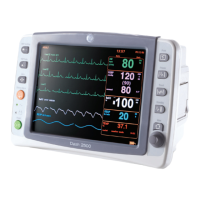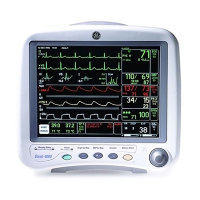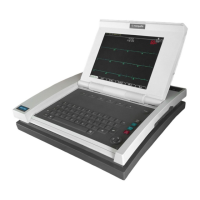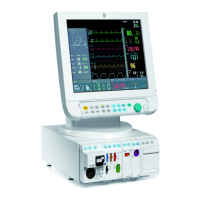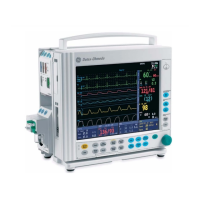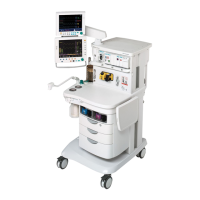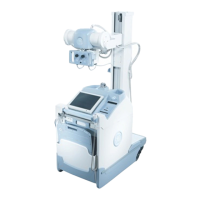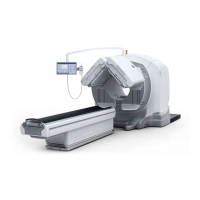Patient Data
2000966-386D Dash™ 3000/4000/5000 6-3
Up to 36 arrhythmia events and 10 ST events (including alarms and references) are
stored. Up to 15 events are displayed in the ALARM HISTORY information window
at one time. When monitoring from telemetry, the event is stored at the tower and the
last 36 events are viewable from the monitor.
The ALARM HISTORY contains 10 seconds of the arrhythmia event in a compressed
format. Due to the display size, only eight seconds of waveform data is shown. For
asystole, the first eight seconds of an event is displayed. All other arrhythmia events
display the last eight seconds of the event.
WARNING
MEASURING DATA STORED IN ALARM HISTORY—
Waveform data stored in ALARM HISTORY uses compression
technology that may not allow perfect reconstruction of the
waveform data when subsequently viewed. Although differences
occur relatively frequently, they are usually very minor. Users are
urged to verify diagnostic waveform measurements with the
waveform data from real-time graph strips.
Three leads of ECG are displayed for arrhythmia events. If an ART line was
monitored at the time of the event, two leads of ECG and the ART waveform are
displayed with the associated numerics.
To select an alarm or event, position the pointer in front of the option and press the
Trim Knob control. Selecting an arrhythmia event displays the applicable waveform
and new menu options.
When viewing an ST alarm or reference, a QRS complex of all available leads
(except AVR) is displayed. If viewing an ST alarm, an asterisk is displayed next to
each lead in violation of ST limits.
Use the following options to review the ALARM HISTORY.
Vital Signs
VITAL SIGNS displays the patient’s monitored parameter values for the last 24
hours, including the last 20 cardiac calculations and the last 10 pulmonary
calculations.
NOTE
If alarms were paused or the monitor was discharged, the word OFF displays in
the ALARMS field of the VITAL SIGNS information window during the time
either of these events occurred.
To review vital signs, select MORE MENUS > PATIENT DATA > VITAL SIGNS.
Option Function
VIEW OLDER ALARM View the previous event.
VIEW NEWER ALARM View the next event.
DELETE ALARM Delete the selected event.

